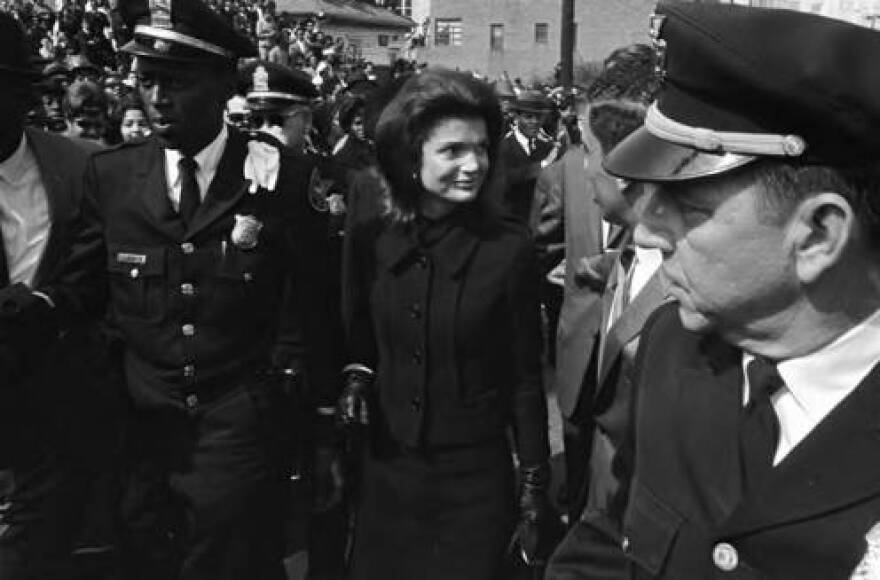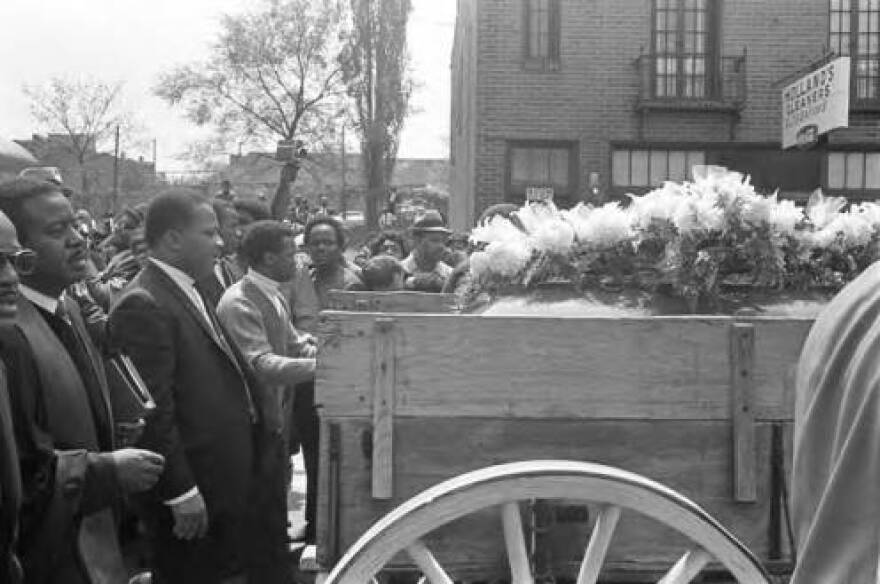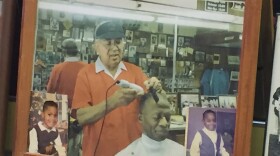
This Wednesday marks fifty years since the assassination of Dr. Martin Luther King, Junior. All month long, the Alabama Public Radio news team has been examining Dr. King’s work and impact here in Alabama. APR guest reporter Ousmane Sagara of the West African nation of Mali reported on how his countrymen remember Dr. King. We examined how Alabama is one of only two states that celebrates the birthdays of Dr. King and Confederate General Robert E. Lee on the same day. Today we look at one man who followed Dr. King with his camera.
Mourners heard from Dr. Martin Luther King during his own funeral. It was a recording of a sermon gave at Ebenezer Baptist Church in February of 1968. It was called the Drum Major Instinct.

“The day I’m on the job I’m just taking pictures left and right, oh there’s Sammy Davis Junior, oh
there’s Jaqueline Kennedy,
Jim Peppler was a photographer for the Southern Courier newspaper out of Montgomery.

“One of the shots I remember getting was Richard Nixon walking through the crowd next to Wilt Chamberlain, odd couple so to speak. Then Bobby Kennedy and Ethel and of course he was killed later that same year.”
Some in the crowd were there to remember King. Peppler kept in mind the mission of The Courier during the turbulent times of the civil rights movement…

“Which was to be a weekly publication giving an honest, open, factual, it was like a demonstration of what journalism should be as well as what America should be and certainly hoping honest coverage of events going on and the attention being paid journalistically to the black communities of Mississippi, Alabama and Georgia.”
But, Peppler was aware of Dr. King long before he signed to shoot for the Courier and act as the paper’s photo editor. He had heard King speak when he was finishing up in college. It was that message that brought Peppler to the south.
“I’d heard pieces of his speeches over the radio and was inspired by that understanding of his words but there are people that have a charisma there’s something in their presence that speaks to something in those around them when they are in that presence, it spoke to me.”

Peppler says King’s presence was even more powerful in person. Even in a room full of people, the civil rights icon spoke in a way that felt personal, like it was a one-on-one conversation…
“There was a sense that he was speaking to me and everyone else in the room from his heart. He had a brilliant way of expressing deep emotional and intellectual truths and words the captured the full intention of what he meant to say with them.”
Peppler followed King throughout Alabama, but it was during a demonstration in Mississippi that he felt he got to see a different side of the civil rights leader. That demonstration became known as the “March Against Fear.”
“I got to see him having breakfast and walking around, talking and walking along with him for hours on

end on the march. Being there right next to him or behind him as he confronted state troopers as one issue or another would come up.”
Peppler says seeing King on television was one thing, but seeing him work in person was a different story.
“ But being there as he went through one thing after another in the field, it filled out the image of what he was about and what his movement was about beyond the words and the rhetoric of his marvelous speeches that I had experienced up until then.”
Peppler covered other stories during his time with the Southern Courier, tending to focus on the everyday lives of black people living in the south that were not being covered by larger papers.
He was on an assignment when he heard that Martin Luther King Junior has been killed…
“I was coming back from something, I forgotten what, in Selma riding with a reporter and we were driving along and heard it on the radio and we pulled over and just started crying.”
But it didn’t take long for Peppler’s journalistic instincts to kick in…
“And then prepare myself to do what I next needed to do immediately to prepare from the pictures I had some kind of a visual tribute to him for the next issue of the paper and then plan to be in Atlanta to photograph his funeral.”

Peppler way to Atlanta to cover King’s funeral. He says he wanted to stop and pay his respects to King at the church…
“But the line, at 3 o’clock in the morning went for way further than, if I had gotten in that line, I may or may not have gotten a picture but I wouldn’t have gotten another picture for the rest of the day.”
He says he was almost too busy to be emotional during the proceedings…
“I was on the job, so there the journalistic imperative to get the job done and I’m only one person covering an event that spanned the city of Atlanta.”
Covering King’s funeral took a lot out of Peppler, the way he sees it, it was his last real assignment for the Southern Courier…

“After I covered Dr. King’s funeral I kind of lost something of myself that empowered me to carry on and I didn’t know what I was going to do. Essentially, from my point of view, King’s funeral was the last thing that I felt myself committed to getting done.”
Jim Peppler went on to work for other publications like Newsday in New York.
And, it’s at the Alabama Department of History and Archives that Peppler hopes his photographic record of Dr. King will live. He donated his images from his work in the south to the Alabama Department of History where digital copies are publicly available.











